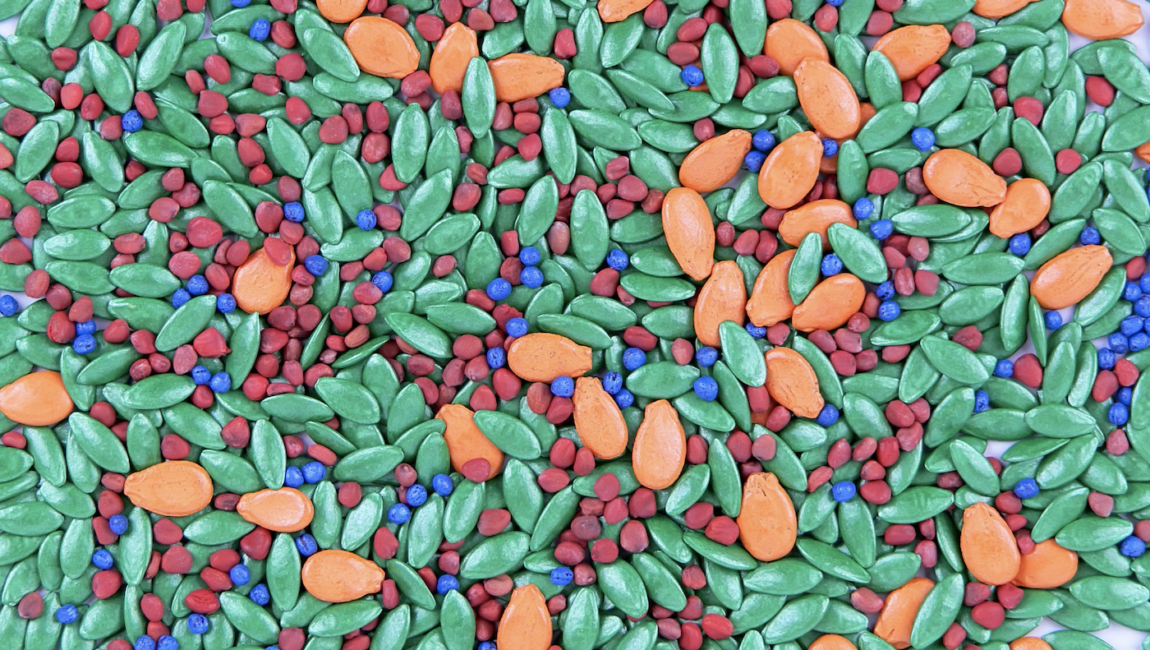
Whether to purchase coated or non-coated seed is a fair question that we answer often. The answer comes down to what kind of seed you are planting and the environment you are planting in, along with some other factors.
Ultimately, seed coating helps improve the success of the seed establishing and putting down some roots.
The practice of coating seeds has been going on for centuries. Historians will tell you hundreds of years ago, farmers in Southeast Asia were some of the first to start the practice. To keep rice in the position it was planted, farmers would place each rice seed into a small mud ball. This practice kept the rice from drifting on their flooded rice paddies, thus, improving the establishment odds of the rice seed.
This gives us one of the reasons to coat seed – to add weight and size and keep the seed in place. This is especially true with smaller seed, including some of our cover crop, forage, wildlife and turf seed. In addition, coating the smaller seed leads to more accuracy while planting because the coating helps with distribution, therefore providing the ability to regulate the spread – and ultimately, how much seed is needed. As we know, less seed = less cost.
The early 1900s saw the use of glue to adhere fertilizer to cereal seed. Again, coating to help a seed in its early developing days and create a better chance of germinating. By encapsulating each individual seed with a coating of fertilizer, the seed has a “built-in” fertilizer application once moisture comes, giving seed some “nourish to flourish.”
Moving forward a few more decades into the 1950s, agriculturalists in New Zealand invented a coating for clover and grass seed to be broadcast by airplane over their jagged hills. The coating they developed aided the seed’s inoculation and ballistics for seeding patterns. The inoculum provided a micro-environment specifically to aid in the seed’s germination success.
So, back to the question at hand—to plant coated or non-coated seed. If you have the right environment for your seed’s ideal habitat, and you are able to plant in the specific method prescribed for that kind of seed, then you should be good with non-coated seed.
However, if your soil does not have the ideal nutrients or conditions, consider coated seed. If your soil has a tendency to host certain fungi, consider coated seed. If you have been in a drought and your preferred seed performs better in a damper environment, you may consider a coated option, as it offers better moisture absorption and transfer to the seed for germination.
Essentially, seed coating encapsulates a seed into a personalized environment so when it is placed – or lands – in your soil, it has a higher chance of survival and the ability for establishment. This is especially true with small seeds like alfalfa, clover, or brassicas.
Seed coating improves the total number of seeds that will germinate, produce healthy roots and shoot to go on and be established plants.
Simply put, the reason to plant coated seed is to improve the establishment process. Whether it is to add weight and size, add fungicide or inoculate the seed, the end goal is to improve the number of seeds that germinate, produce vibrant roots and shoots, then go on to produce full, well-established plants.
Choosing a coated or a non-coated seed ultimately comes down to your soil’s environment and your goals. Either way, we are here to help you make those decisions at Missouri Southern Seed. Give us a call today and let’s talk.
